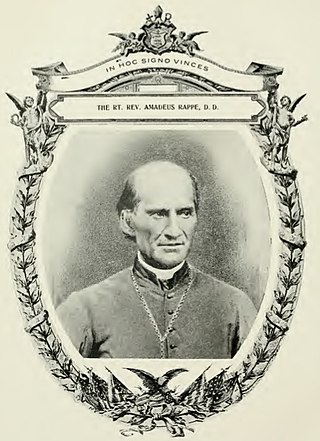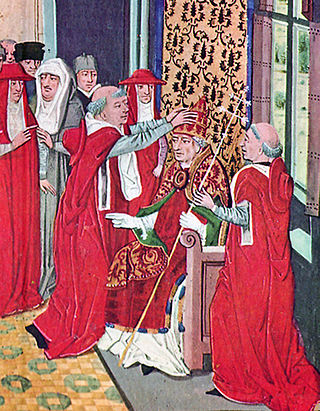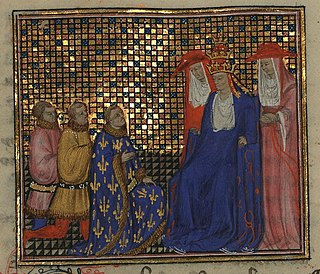Eustace IV ruled the County of Boulogne from 1146 until his death. He was the eldest son of King Stephen of England and Countess Matilda I of Boulogne. When his father seized the English throne on Henry I's death in 1135, he became heir apparent to the English throne but predeceased his father.

Boulogne-sur-Mer, often called just Boulogne, is a coastal city in Northern France. It is a sub-prefecture of the department of Pas-de-Calais. Boulogne lies on the Côte d'Opale, a touristic stretch of French coast on the English Channel between Calais and Normandy, and the most visited location in the region after the Lille conurbation. Boulogne is its department's second-largest city after Calais, and the 183rd-largest in France. It is also the country's largest fishing port, specialising in herring.

The County of Boulogne was a county within the Kingdom of France during the 9th to 15th centuries, centred on the city of Boulogne-sur-Mer. It was ruled by the counts of Flanders in the 10th century, but a separate House of Boulogne emerged during the 11th century. It was annexed by Philip II of France in 1212, after which it was treated as part of the county of Artois until it was finally annexed into the royal domain in 1550.

The Bois de Boulogne is a large public park located along the western edge of the 16th arrondissement of Paris, near the suburb of Boulogne-Billancourt and Neuilly-sur-Seine. The land was ceded to the city of Paris by the Emperor Napoleon III to be turned into a public park in 1852.

Charles was the Duke of Lower Lorraine from 977 until his death.

Renaud de Dammartin was Count of Boulogne from 1190, Count of Dammartin from 1200 to 1214 and Count of Aumale from 1204 to 1214. He was son of Alberic III of Dammartin and Mathilde of Clermont.
The former French diocese of Thérouanne controlled a large part of the left bank of the river Scheldt during the Middle Ages. Territorially it was part of the county of Artois which belonged to the county of Flanders.
Jean-Baptiste-Charles-Marie de Beauvais was a French bishop of Senez.

The Roman Catholic Diocese of Arras (–Boulogne–Saint-Omer) is a diocese of the Latin Rite of the Roman Catholic Church in France. The episcopal see is the Arras Cathedral, in the city of Arras. The diocese encompasses all of the Department of Pas-de-Calais, in the Region of Nord-Pas-de-Calais.

The Diocese of Tournai is a Latin Church ecclesiastical territory or diocese of the Catholic Church in Belgium. The diocese was formed in 1146, upon the dissolution of the Diocese of Noyon & Tournai, which had existed since the 7th Century. It is now suffragan in the ecclesiastical province of the metropolitan Archdiocese of Mechelen-Brussels. The cathedra is found within the Cathedral of Notre-Dame de Tournai, which has been classified both as a major site for Wallonia's heritage since 1936 and as a World Heritage Site since 2000.
Philippe de La Chambre was a French Benedictine monk and Abbot, and Cardinal.

The House of Blois is a lineage derived from the Frankish nobility, whose principal members were often named Theobald.

Louis Amadeus Rappe was a French-born prelate of the Roman Catholic Church. He served as the first bishop of the new Diocese of Cleveland in Ohio from 1847 to 1870.

Guy of Boulogne was a statesman and cardinal who served the Avignon Papacy for 33 years. He participated in the papal conclaves of 1352, 1362 and 1370, and was the Subdean of the Sacred College of Cardinals. His diplomatic postings were extensive, including Hungary, Italy, and Spain. He headed an effort to end the Hundred Years' War. The historian Kenneth Setton called him "one of the commanding figures of his day, and the letters of Petrarch abound with references to him".

Robert of Geneva, elected to the papacy as Clement VII by the cardinals who opposed Pope Urban VI, was the first antipope residing in Avignon, France. His election led to the Western Schism.
Pierre de Langle was a French bishop and Jansenist theologian.
Events from the year 1550 in France
Events from the year 1567 in France.

Étienne-Antoine Boulogne (1747–1825) was a French cleric of the Roman Catholic Church. He served as Bishop of Troyes from 1809 to 1825.
This page is based on this
Wikipedia article Text is available under the
CC BY-SA 4.0 license; additional terms may apply.
Images, videos and audio are available under their respective licenses.











